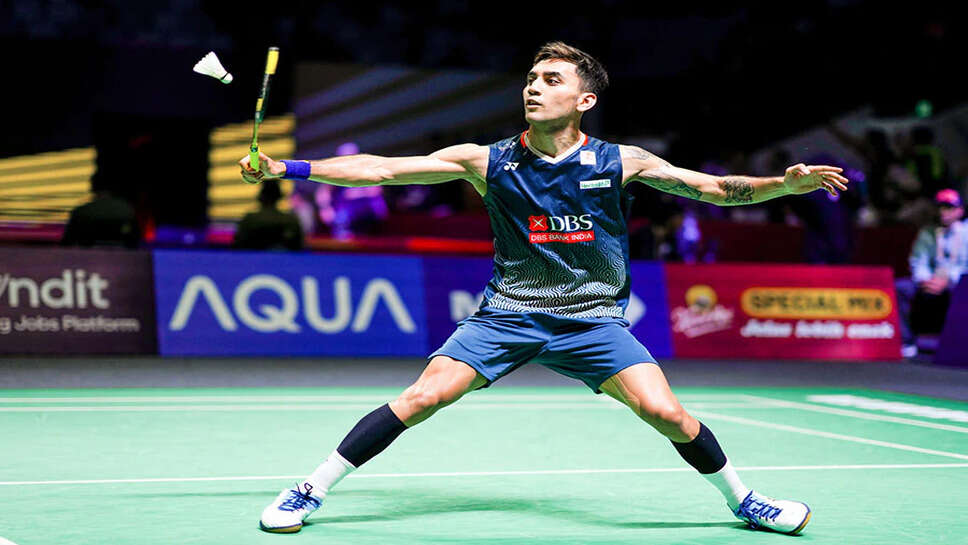Coach Concerned: Are Lakshya Sen’s Misfires Costing His Big Matches

Lakshya Sen has firmly established himself as one of India’s most talented badminton prodigies, consistently ranking among the world’s top 10 and reaching the later stages of multiple Super Series events. However, recent matches have exposed troubling inconsistencies in his game—patterns of suboptimal shot selection and a once‑fierce smash that now lacks punch have left veteran coach Vimal Kumar visibly concerned.
Here’s a breakdown of the issues, their possible roots, and what they could mean for Sen’s trajectory over the next season.
1. Diminished Decisiveness at Critical Junctures
In high-stakes meetings—be it a World Tour semi-final or an Olympic qualification clash—Sen has shown a tendency to hesitate. Instead of confidently executing aggressive shots, he often opts for safe down-the-line clears, giving his opponent time to regroup.
This hesitation shifts momentum. Instead of forcing returns, he hands them over. As defense turns into control, adversity grows. Opponents sense the dip in intensity and begin dictating play, leaving Sen scrambling.
Coach Vimal Kumar has pointed out that Sen’s hesitation often comes after a couple of scrappy rallies—almost as if he’s lost his competitive edge mid-game, unable to flip the switch back into attack mode.
2. Why the Lacking Smash?
In his best days, Sen wielded a smash with both accuracy and ferocious power. His signature weapon disrupted opponents, creating openings and setting the pace. In recent performances, however, that smash seems to have lost its sting. Speed is down by around 10–15%, angles are softer, and the ball barely forces weak returns rather than earning outright points.
Several factors might be responsible:
-
Technical Drift: There are subtle changes in his grip, shoulder rotation, or timing—likely a result of training shifts or injury-readiness conservatism.
-
Fitness and Energy Deficit: Tapering in training leading to cautious play in games, possibly to preserve stamina through long tournaments.
-
Mental Overthinking: A subconscious fear of errors and injury may have dampened the natural aggression of the smash.
For Coach Kumar, the smash is integral to Sen’s play identity. Without it, he loses his killer instinct.
3. Muddled Shot Selection
Shot selection isn’t just about which shot to play—it’s about when and why. Ideally, every choice in a rally should serve a tactical purpose: gaining net dominance, destabilizing position, or shifting pace. But lately Sen appears reactive, not proactive.
Examples of poor patterns:
-
Cross-court drops instead of tight net kills: Often played from deeper court positions, allowing opponents to reset.
-
Uppers to mid-court drives: Permitting fragile, floated returns instead of challenging flicks to the midline.
-
Backhand flicks in high-pressure rallies: Forceful choices are replaced with tentative clears, reducing initiative.
This pattern of risk-averse decision-making has left opponents able to reset and regroup, turning Sen’s brilliant rallies into predictable slugfests.
4. Psychological Pressures
Yet badminton is more than muscle and racket—it’s chess at high speed. Vimal Kumar has observed that pressure from ranking targets, contractual expectations, and media scrutiny may be clouding Sen’s clarity on court.
When the stakes are high, Sen grips the racket tighter—literally and metaphorically. That tension shows in slower swings, shorter backswing in smashes, and delayed footwork. Even top professionals can overthink in game-deciding moments. Instead of trusting instincts, they second-guess tactics.
5. Effects on Confidence and Momentum
Competitive rhythm relies on small wins. A sharp smash, a surprise net kill, or a tightly executed drop shot builds flow and confidence. But Sen’s recent issues have triggered a negative cycle:
-
First errant shot → tension increases
-
Opponent senses hesitation → becomes assertive
-
Sen misses more aggressive opportunities → confidence dips
-
Safe play becomes default, gaps open permanently
Coach Kumar recognizes this spiral. In their recent debriefs, Kumar emphasized that once a few sub-optimal shots creep in, the entire rhythm collapses. It becomes a fight not just for points, but for mental survival.
6. Coach Kumar’s Remedial Strategy
a. Technical Reminder Sessions
Kumar has arranged short, sharp drills focusing on the smash—specifically wrist snap, trajectory, and follow-through. He emphasizes resetting the grip and full rotation—back to basics.
b. Scenario-Based Pressure Training
Simulated scenarios—match-point down, tight scorelines—are being applied so Sen relearns to pump out winners instead of playing safe. These high-tension drills re-teach instinct rather than tactic.
c. Shot-Selection Workshops
Training now includes rally breakdowns. Together they analyze recent games, replaying rallies where aggressive options were available but sidestepped. Interventions are supported by slow-motion video, with open discussion on why safer plays overtook bold ones.
d. Psychological Conditioning
Regular sessions with a sports psychologist are in place—to strengthen relaxation under pressure, restore trust in his skillset, and counteract the crippling second-guessing.
7. Early Signs of Improvement
Despite the recent slump, early changes are visible:
-
Sprint drills show regained explosive timing that translates to sharp-hit smashes.
-
Pressure-killer matches reveal a more fearless mindset—smashes being directed to corners, net plays initiated assertively.
-
In-game nerve: Sen was observed during a recent practice tournament playing a high-risk cross-court smash while trailing mid-game—a notable switch from his earlier conservative fallbacks.
Coach Kumar believes these are early indicators that the vital tools—a fearsome smash and smarter shot selection—can be restored.
8. Challenges Ahead
But several hurdles remain:
-
Streak endurance: Bringing back power and instincts under fatigue is harder than in fresh circuits. It requires systemic conditioning.
-
Tactical re-programming: Undoing four months of cautious play means re-wiring decision-making muscles—through repetition and mental reinforcement.
-
Tournament pressure: India Open and Asian Championships are imminent. Extended rallies and crucial shifts in gameplay will test Sen’s regained aggression early.
9. Why This Matters for His Career
If Sen fails to fix the foundational mismatch between his technical brilliance and diluted aggression, he risks stagnating in quarterfinal rounds—where bigger margin winners are essential. The difference between top-8 and champion-level results in badminton often lies in ability to blindside the opponent decisively—and Sen’s lost his edge briefly.
For Coach Kumar, restoring Sen’s winning instincts isn’t just about trophies—it’s about cementing India’s long-term presence on the world stage.
10. Redemption in Sight, But Not Guaranteed
Lakshya Sen remains among the most talented players of his generation—a dynamic athlete capable of dismantling top-tier opponents. His sharpened footwork, aerial dexterity, and court intelligence are intact. But victories in elite badminton rely on more than ability: discipline, decisiveness, and an indefatigable killer instinct are essential.
Coach Vimal Kumar’s concern is rooted in this fine margin. The fact that shot selection and smash execution have faltered strongly hints at deeper psychological and technical drift. Without intervention, Sen risks repeating earlier halts in progress.
Yet, with targeted retraining—structured technical drilling, simulated pressure, and mental resetting—Sen has the potential to reclaim his true game. If he can silence the doubt, reassert his aggressive play, and let his weapon-like smash bite again, the world will struggle to keep pace.
In coming months, Sen must prove he is still the bold, fearless attacker he once was. Kumar’s fears are valid—but if their window of correction holds before major tournaments begin, a resurgence is entirely possible. The world is watching: a relit Lakshya Sen is the threat the badminton world must prepare for.
